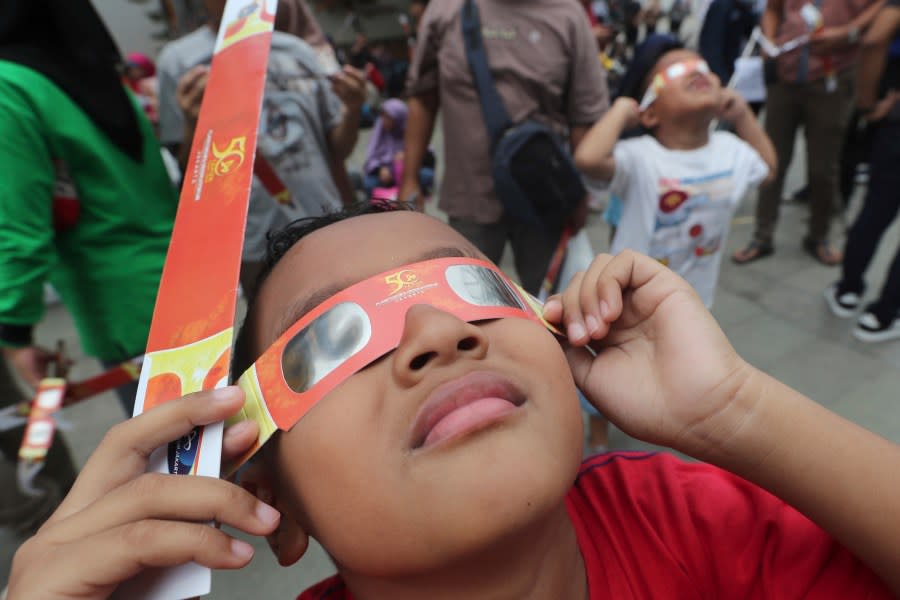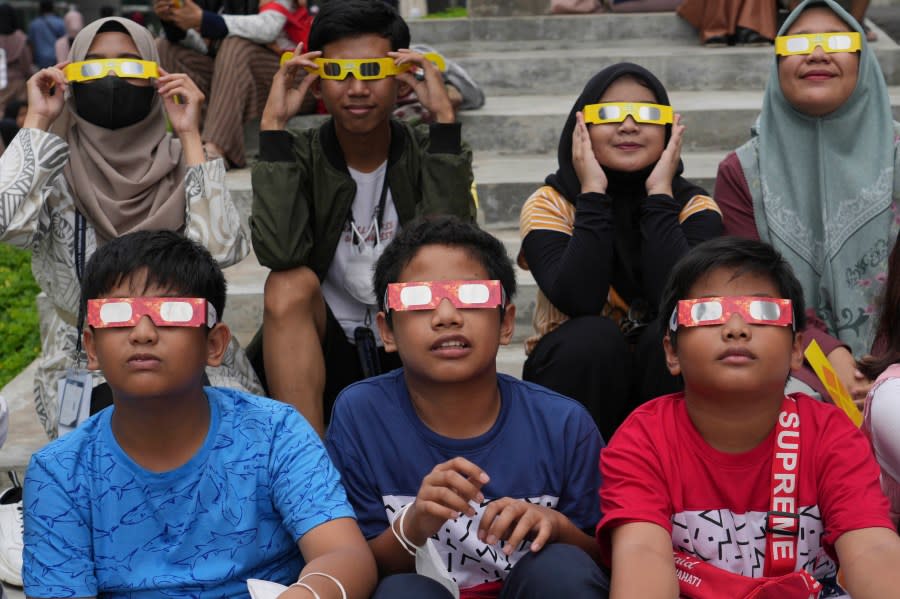How to know if your eclipse glasses will protect you

The 2024 total solar eclipse is almost here — and if you’re hoping to get a glimpse of the phenomenon, it’s best to make sure that you have real, working eclipse glasses that can protect your eyes.
Here’s what to know about eclipse glasses and how to check that they are safe to use.
Solar eclipse glasses can be used to safely view a total solar eclipse, but it’s important to make sure they’re of the right quality. Don’t use sunglasses, smoked glass, an unfiltered telescope and magnifiers or polarized filters as a way to view the eclipse.
The only glasses that should be used to look at a partially eclipsed sun is with eclipse glasses that meet an international standard, ISO 12312-2, according to the American Optometric Association.
That international safety standard, which is set by the International Organization for Standardization, means the glasses reduce visible sunlight to a safe level, and block ultraviolet and infrared radiation, according to the American Astronomical Society website. According to the ISO, the safety standard is reviewed every five years.
Blocking that radiation is important. Ultraviolet, or UV, radiation can damage the cells of the eyes, while the infrared, or IR, radiation can generate heat that causes thermal damage, according to the National Eye Institute.
How to make sure the eclipse glasses you bought are real
Real eclipse glasses will have a note about the international standard somewhere on their body, according to the American Astronomical Society. Before buying, make sure the glasses are advertised as meeting this standard.
If you already bought the glasses, check the arm for the the “ISO 12312-2” label. The standard may also be written as “ISO 12312-2:2015,” the AAS says on its website. Either designation means that the glasses will block light and radiation.
The label may be on the flat or curved part of the arm.
NASA has also released guidance on how to test your eclipse glasses. The space agency recommends putting on your glasses and finding a bright light. If the light appears extremely dim, or doesn’t appear at all, when you look at it through the glasses, they are legitimate. You should only be able to see the filament of the bulb, not its glow.

How to avoid buying fake solar eclipse glasses
Checking for the international standard isn’t foolproof: It’s possible for sellers with products who do not meet the standard to label their eyewear with it anyway. To avoid this, make sure you’re ordering glasses from a reliable source.
The American Astronomical Society advises against ordering from Amazon, Temu or other online marketplaces, and recommends against ordering if prices seem to be too good to be true. The AAS also said it’s best to purchase from manufacturers based in the United States. CBS News previously reported that counterfeit glasses have been sold by companies based overseas.
The organization maintains a list of reputable vendors of solar eclipse glasses. CBS News previously reported that NASA supports the American Astronomical Society‘s work, though the space agency does not maintain its own list of vendors.
The ISO, the body that established the international standard for eclipse glasses, also sells them on its website.
Why it’s important to double-check older solar eclipse glasses
If you’re reusing glasses from a previous solar eclipse, it’s important to double-check that they are still in good condition. NASA warns against using glasses that have any marks or scratches on them. This damage can diminish the protection they offer. Glasses that have punctured lenses should also not be used.
Glasses that are more than three years old should not be used to view the 2024 total solar eclipse, according to the National Eye Institute — so if you saved your glasses from the 2017 eclipse, you may want to think about finding a new pair.
How to make sure your homemade eclipse viewing tool is safe
If you’re not buying glasses, it is possible to make an indirect viewing method for viewing the eclipse at home. An indirect viewing method means that you don’t look directly at the sun so your eyes remain protected even without eyewear.
NASA recommends making a pinhole projector, which uses a small opening like a hole punched in an index card, to project an image of the sun onto a nearby surface. When using a pinhole projector, keep the sun at your back and view the projected image to safely see the eclipse. However, to do this safely, it’s important to make sure to avoid actually looking at the sun itself.
For the latest news, weather, sports, and streaming video, head to WLNS 6 News.

